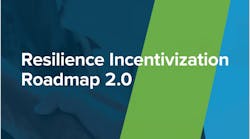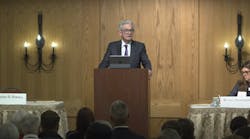By PHOEBE BEIERLE, U.S. Green Building Council
The U.S. Department of Energy (DOE) and Environmental Protection Agency (EPA) announced details for more than $1 billion in funding for clean energy, high-impact energy efficiency and health-focused grant and rebate programs for schools.
The 2021 Bipartisan Infrastructure Law (BIL) established historic opportunities for schools through new and expanded funding to improve the sustainability, resilience and health of school buildings and transportation infrastructure. The disbursement of these funds takes time and has been rolling out from the responsible federal agencies on different schedules.
Two areas of the BIL that got specific attention in October were the EPA’s Clean School Bus Program, which funds electric and low-emission school buses, and DOE's grant program, which funds energy improvements in public school facilities. Additional funding opportunities, award programs and associated opportunities for K–12 schools to improve health, resilience and sustainability are outlined in a White House fact sheet.
Renew America’s Schools
One of the most anticipated areas of the BIL is the Renew America’s Schools Grant, which provides some $500 million for energy efficiency and clean energy improvements to school buildings. Like most school funding from the BIL, this grant focuses on serving districts in rural and high-poverty areas.
The Department of Energy is taking care to design its applications for this grant process to meet equity goals and ensure that the funds reach those who are most in need. The agency held many conversations with stakeholders, including a series of school district focus groups that the Center for Green Schools organized in spring 2022. These focus groups helped DOE better understand the challenges on the ground, as well as opportunities for partnerships.
On Oct. 26, DOE published a Notice of Intent (NOI) and a press release announcing up to $80 million available in the first tranche of funding for schools. The NOI provides high-level implementation plans and lays out the process for the forthcoming application, which is stated to open in late November and close in February 2023. It also details the process for being listed as a “Teaming Partner,” which applies to organizations that have expertise in energy efficiency and renewable energy, with a focus on identifying possible partnerships and technical resources.
In addition to grants for districts to replace aging HVAC systems and to implement building envelope and lighting projects and alternative fuel and renewable energy technologies, DOE responds to concerns from stakeholders about bandwidth and lack of technical knowledge, especially in smaller districts. As part of the Energy Champions Leading the Advancement of Sustainable Schools Prize (Energy Class Prize), $4.5 million will be available to support these districts to train administration and facilities personnel to build capacity and knowledge for implementing health and energy improvements across their schools.
Clean School Bus Program
In addition to the electrification of buildings, a major priority for the Biden administration is the electrification of the country’s transportation system. School buses are some of the biggest contributors to vehicle pollution on the road. The Bipartisan Infrastructure Law of 2021 makes an unprecedented investment of $5 billion for low- and zero-emission buses, to be spent over the next five years.
The first round of the EPA’s Clean School Bus Rebates makes nearly $1 billion in funds available across the country to replace approximately 2,500 aging diesel school buses. The application for this rebate program was streamlined significantly to ensure that communities that do not always have the resources to process complex federal grant applications could engage and access the funds.
The program received applications from 2,000 districts, totaling $4 billion in requested funds, demonstrating the districts' significant interest in transitioning to a cleaner and greener fleet. You can see which districts received funding in the EPA's interactive map. The next round of funding will be announced in 2023.
##########









